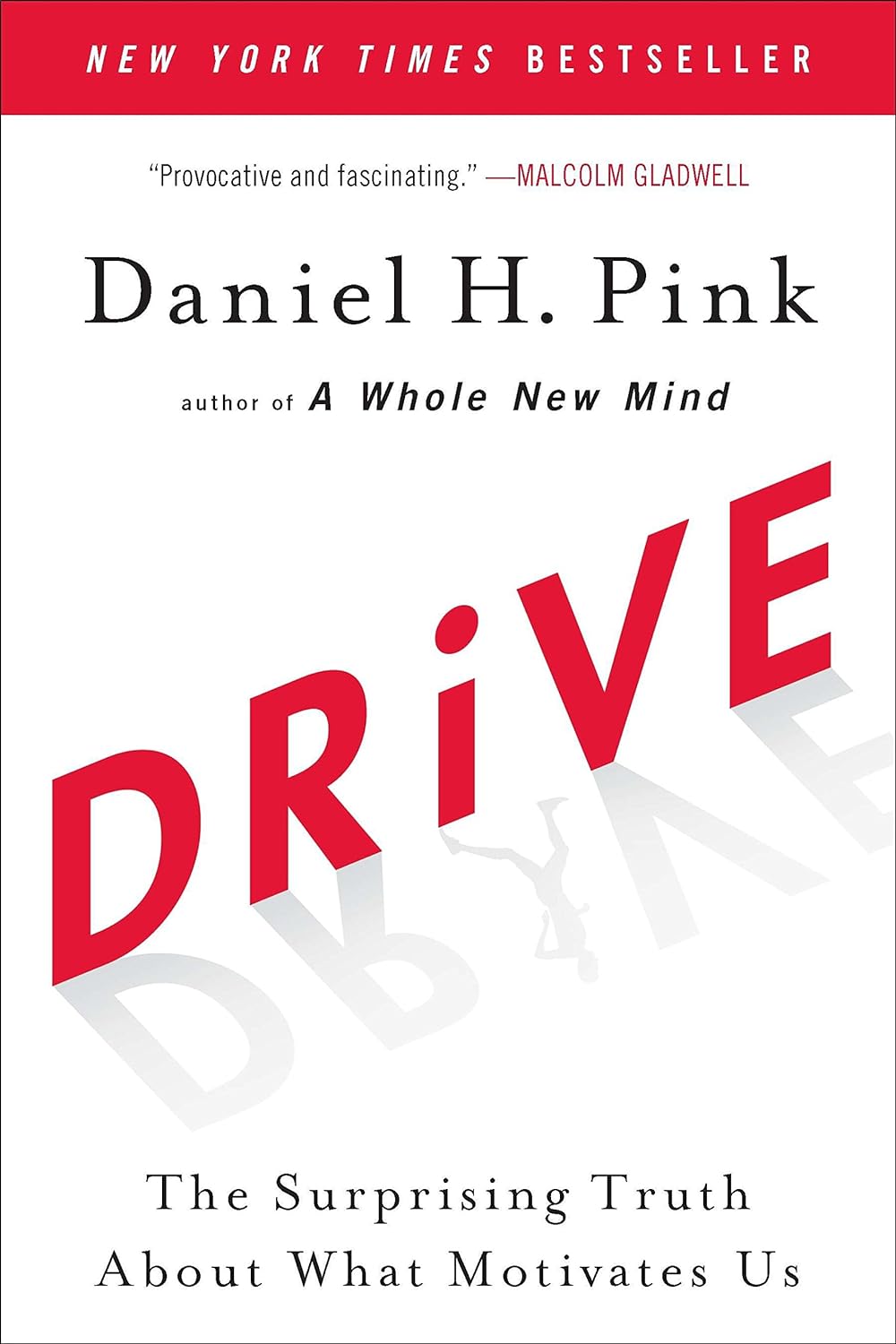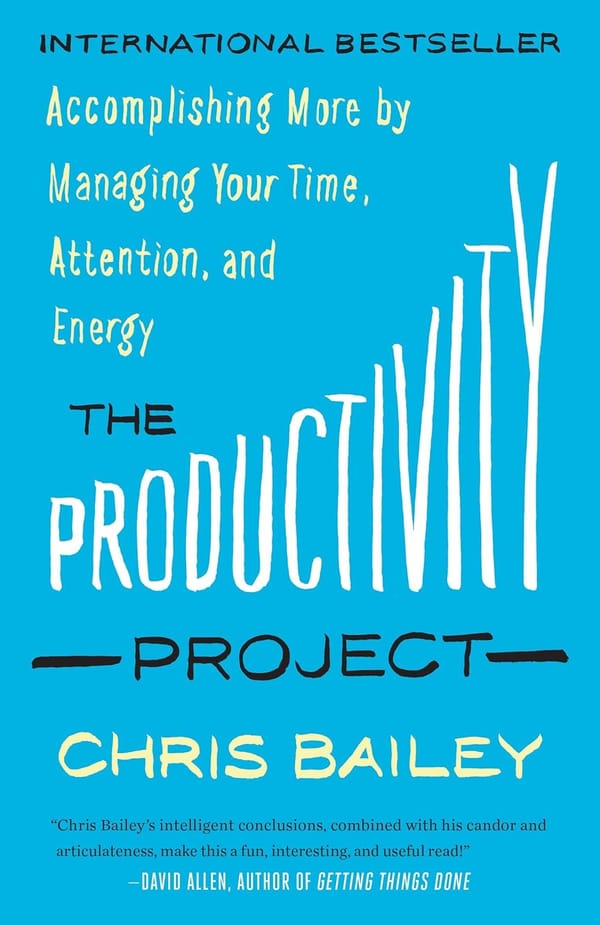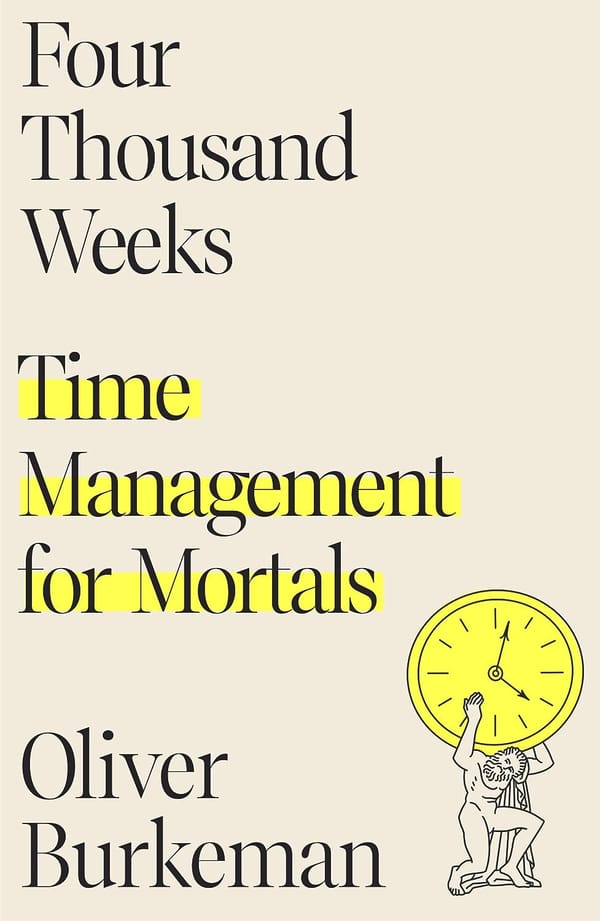Drive - Book Notes
If you enjoyed my review, consider supporting me by using the affiliate links below to purchase the book. Your kindness fuels my passion for sharing captivating reads with you!
🚀 The Book in 3 Sentences
- "Drive" explores the intricacies of motivation through the lens of Self-Determination Theory.
- Pink argues that traditional external motivators, such as monetary rewards and imposed goals, can undermine intrinsic motivation.
- The book advocates for fostering autonomy, mastery, and purpose in individuals and organizations to unlock the true drivers of motivation and creativity.
👱 Who Should Read it?
"Drive" is recommended for individuals across various domains, including business leaders, educators, and anyone interested in understanding and enhancing motivation. Entrepreneurs seeking innovative approaches to management, educators aiming to optimize learning environments, and professionals in leadership roles will find valuable insights into fostering intrinsic motivation. Additionally, individuals interested in personal development and a deeper understanding of human behavior in the context of motivation will benefit from reading this book.
🍀 How the Book Changed Me
It challenged my belief about extrinsic motivation, especially monetary rewards and made me realize that I myself am too focused on getting extrinsic rewards instead of finding a purpose behind my tasks. I started to find more purpose - a why - for the things I do and want to achieve and restructure my goals accordingly.
✍️ Top 3 Quotes
- "Rewards can perform a weird sort of behavioral alchemy: They can transform an interesting task into a drudge. They can turn play into work."
- "The very presence of goals may lead employees to focus myopically on short-term gains and to lose sight of the potential devastating long-term effects on the organization."
- "In environments where extrinsic rewards are most salient, many people work only to the point that triggers the reward—and no further"
🔨 3 Action Points
- Implement Autonomy in the Workplace:
Encourage a results-only work environment (ROWE) or other autonomy-enhancing policies that provide employees with control over their tasks, time, technique, and team. - Emphasize Mastery and Learning Goals:
Foster a culture of continuous improvement by encouraging employees to set learning goals alongside performance goals. Provide opportunities for skill development and training. - Connect Work to a Larger Purpose:
Clearly articulate and emphasize the purpose and impact of each individual's work within the larger organizational mission. Promote teamwork and facilitate meaningful connections among team members.
📗 Summary & Notes
Introduction: The Paradigm Shift in Motivation
In "Drive," Daniel H. Pink fundamentally challenges the widely accepted notion that external rewards, particularly monetary incentives, are the primary drivers of motivation. Instead, he introduces the concept of Motivation 3.0, which prioritizes intrinsic motivators—autonomy, mastery, and purpose. This revolutionary shift in perspective calls for a reevaluation of traditional approaches to motivation in both personal and professional spheres.
The Sawyer Effect: Unraveling the Downsides of Rewards
Pink delves into the intricacies of the Sawyer Effect, revealing how external rewards, initially offering a short-term boost, can paradoxically erode intrinsic interest over time. The negative consequences extend beyond mere task demotivation; they transform once-interesting endeavors into mundane chores. This insight challenges the prevailing belief that rewards consistently enhance performance and creativity.
Seven Deadly Flaws: Deconstructing External Motivators
Pink systematically dissects the flaws associated with external motivators. From extinguishing intrinsic motivation to fostering short-term thinking, he demonstrates how reliance on rewards can lead to a cascade of negative consequences in both individual and organizational contexts.
The Seven Deadly Flaws are:
- They can extinguish intrinsic motivation.
- They can diminish performance.
- They can crush creativity.
- They can crowd out good behavior.
- They can encourage cheating, shortcuts, and unethical behavior.
- They can become addictive.
- They can foster short-term thinking.
Type X vs. Type I Behavior: The Battle Within
The dichotomy between Type X (extrinsically driven) and Type I (intrinsically motivated) behavior serves as the focal point of Pink's analysis. Type I individuals, fueled by internal desires, consistently outperform their extrinsically motivated counterparts in the long run. Pink emphasizes that autonomy, mastery, and purpose are the cornerstones of cultivating Type I behavior.
Self-Determination Theory: Three Fundamental Needs
SDT posits that individuals have three fundamental psychological needs: competence, autonomy, and relatedness. Pink emphasizes the critical role these needs play in cultivating intrinsic motivation. When these needs are satisfied, individuals are more likely to be motivated, productive, and happy.
Autonomy in the Workplace: ROWE and the Four T's
Pink explores the transformative concept of ROWE, where a results-only work environment liberates employees from rigid schedules and empowers them to manage their tasks, time, techniques, and teams autonomously. This autonomy, Pink argues, is vital for cultivating intrinsic motivation, particularly in creative and nonroutine tasks.
Flow: The Art of Deep Engagement
The concept of flow, characterized by a state of deep engagement, is meticulously examined by Pink. He emphasizes the importance of creating environments conducive to flow and introduces the notion of "Goldilocks tasks"—challenges that are neither too simple nor too difficult. This approach aims to strike the perfect balance that fosters both productivity and job satisfaction.
Mastery Laws: The Path to Long-Term Excellence
Pink delves into three laws of mastery: the mindset, pain, and asymptote. He explores how beliefs about intelligence and the willingness to endure long-term effort (grit) play pivotal roles in achieving mastery. Pink's insights challenge the prevailing assumption that talent alone is sufficient for high accomplishment.
- Mastery Is a Mindset:
This law emphasizes the role of mindset in the pursuit of mastery. Carol Dweck's work on mindset is relevant here. Individuals with a growth mindset see abilities as qualities that can be developed through dedication and hard work, while those with a fixed mindset believe abilities are innate and unchangeable. The law of mindset suggests that adopting a growth mindset, viewing challenges as opportunities for learning and improvement, is essential for achieving mastery. - Mastery Is a Pain:
Pink argues that achieving mastery requires significant effort over a prolonged period. The term "grit," popularized by psychologist Angela Duckworth, encapsulates this idea. Grit refers to perseverance and passion for long-term goals. The law of mastery being a pain acknowledges that the journey to mastery involves challenges, setbacks, and sustained effort. It underscores the importance of resilience and determination in overcoming difficulties on the path to mastery. - Mastery Is an Asymptote:
An asymptote is a mathematical concept representing a line that continually approaches but never quite reaches a particular value. Pink extends this idea to mastery, suggesting that while individuals can continuously approach and improve their skills, reaching absolute mastery is an unattainable goal. Mastery is a journey rather than a destination. This law encourages a continuous pursuit of improvement and learning, recognizing that there will always be room for growth and refinement.
Example: Consider a musician aiming for mastery of a musical instrument. Embracing the mindset that improvement is possible through practice and dedication (Law 1), understanding that the journey will involve challenges and setbacks (Law 2), and acknowledging that true mastery is an ongoing process without a definitive endpoint (Law 3) are crucial aspects of the musician's path to becoming a master of their craft.
Performance Goals vs. Learning Goals: Navigating Motivational Paths
Pink delves into the distinction between performance goals and learning goals. Performance goals, such as achieving a certain grade or hitting a sales target, often stem from external pressures and can hinder intrinsic motivation. On the other hand, learning goals, centered around acquiring new skills or knowledge, align more closely with intrinsic motivation.
Example: A salesperson having a performance goal might aim to meet a specific sales target to receive a bonus. In contrast, a learning goal-oriented salesperson might focus on improving their negotiation skills or deepening their understanding of client needs, contributing to sustained intrinsic motivation.
Purpose Over Profit: The Rise of Purpose-Driven Organizations**
In the concluding sections of "Drive," Pink advocates for a transformative shift towards purpose-driven organizations. He argues that companies standing for something beyond profit contribute positively to the world, resulting in increased employee satisfaction and overall well-being. This call for a focus on purpose represents a departure from conventional business paradigms.



